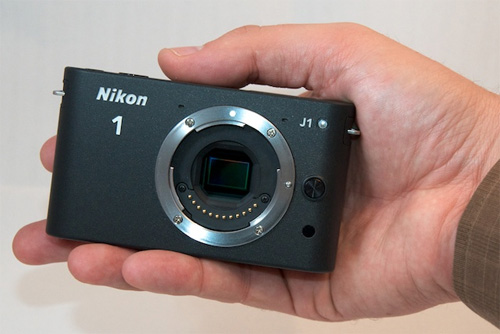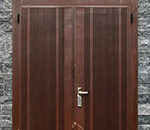Over recent years there has been an explosion in the range of digital cameras. Although there has been a move away from ‘traditional’ type of compact cameras and digital single lens reflex (DSLR) with the industry appearing to focusing a lot of development ‘compact system cameras’ (bridge camera). This has made it even harder to decide which digital camera is the best for the average consumer.

The recently released Nikon J1 – a new Bridge Camera concept
The principle behind most compact system cameras is the same as that of a DSLR, with the benefits of relatively large sensors and interchangeable lenses, but coupled with the portable nature of the advanced compact cameras. These cameras are designed to deliver a high standard of functionality and image quality in a relatively small and inexpensive camera body.
This opens the market for manufactures, to first-time users demanding a reasonably priced way of attaining high-quality images, through to the enthusiast who may not wish to carry around a heavy DSLR body and collection of lenses for a day’s shooting or for whom the price of a pro digital SLR would be prohibitive.
Although, I would opt for the functionality and image quality of compact system cameras, are these really the best option for everyone?
Compact Cameras
Compact cameras are designed for the less demanding and occasional users and are good for family and holiday snaps. Supplied with ‘smart’ and ‘intelligent’ technology, compact cameras are ideal for those happy to leave all the decision-making to the camera rather than themselves, but also allowing some degree of control when needed. Ironically these cameras can often be the most difficult to choose due to the vast array of models from a huge number of manufacturers.
Pixels
Many of today’s digital cameras contain larger sensors than in the past, incorporating between 8–16 million pixels (MP). This comfortably meets and surpasses the requirements of most digital camera users today for taking family photographs and holiday snaps.
While a greater number of pixels can be beneficial in good light, this can also have a negative effect on image quality when you use camera’s light sensitivity or ISO settings to the maximum when photographing in low light conditions.
This doesn’t mean you should avoid digital cameras with the a high number of megapixels, but that your decision regarding the digital camera that would most suit your needs should take into account both quality of the image sensor, number of mega-pixels, ease of use and the quality of the lens. Lens quality and sensor quality are two guiding factors that should always be at the forefront of any decision when considering the type of digital camera, model and manufacturer, you wish to purchase.
If you do plan on buying a simple compact camera, and you’re likely to be using it in a range of lighting conditions, lookout for those which use a ‘backlit’ sensor, as these tend to capture images with less noise (noise is the color distortion caused by low light conditions where your digital camera is trying to compensate, this grainy and spotted appearance may spoil what would otherwise be a nice photograph) and with a greater dynamic range. As the technology improves manufacturers are incorporating this feature in to a greater range of models. Nevertheless, it’s worth inquiring prior to purchasing your new camera.
Lenses
As previously mentioned the quality of the lens is of real significance of when considering which camera to purchase. It is advisable to find a camera that has a range of the lens, as this will determine how suitable it is for different subjects and situations. I would advise that when purchasing a new camera body you choose a short zoom lens with a range between approximately 24 mm to 70 mm. Of course, it’s likely that as an initial purchase, the camera will come as a ‘lens kit’, where the camera body lens come boxed together.
Many manufacturers equip their digital cameras with an image stabilization system. If possible, look for cameras with either lens or sensor-based image stabilization, particularly if you’re looking to buy a camera with a relatively long zoom. This will help maintain a higher standard of image quality in lower light conditions.
Viewfinder
The many compact cameras have an optical viewfinder, but not all do. These are linked to the optical zoom of the camera and operate in relation to the lens, and are useful for photographing in bright light when LCD screens become hard to view. Optical viewfinders are found on higher specification compacts such as Canon’s G 12 or Nikon’s P 7000.
Only Spend What You Can Afford
It’s easy to be convinced by glossy brochures and slick sales patter to part with more money than you can reasonably afford when purchasing a digital camera. But if you have a little more money to spend,what camera should you be looking for and what are their benefits? A more expensive compact camera may provide a better quality sensor and a better quality lens, which together help improve the quality of the digital photographs you shoot. They may also offer manual control over exposure for when you are more technically proficient, and you may have the facility to shoot in raw, a shooting mode which will give you a more information recorded on to the digital image allowing greater flexibility when processing the image in programs such as Photoshop. Moreover, higher specification models are likely to have a superior LCD screen to those on cheaper cameras, which will not only provide greater clarity but will also be easier to view in bright and sunny conditions.
If you require a larger zoom range, you will defiantly want to consider a bridge camera. These combine expansive optical zooms with manual exposure options, which together provide control similar to a digital SLR.
Alongside higher quality LCD screens bridge cameras tend to incorporate electronic viewfinders with around 230,000 dots of resolution, although the performance of these varies wildly between models so it’s worth considering this before coming to a decision regarding any particular model. These viewfinders also have the added benefit of displaying much of the information found on the camera’s LCD, which allows you to view and change camera’s settings without the need to take the camera away from your eye.
While the results from a bridge camera generally are not as good as that of the quality of a digital SLR, what you lose in quality you gain in portability and convenience in a small and inexpensive camera body. Various cameras now have articulated LCD screens and HD video recording, and as previously mentioned some even offer a raw shooting mode.
Compact and Bridge Camera Summary
In summary, if you have about $300–400 to spend and you want something pocket-sized yet capable, look out for a model with a healthy range of manual control, an LCD screen with at least 460,000 dots and ideally a backlit sensor. But before you do that, consider whether you’d be better off with a compact system camera (bridge camera). This will give you greater flexibility and better general image quality.
Perhaps another consideration is the future of your photography, and what you wish to achieve as a photographer. If you are considering simply taking snapshots then a compact camera is perfect. However, if you wish to move toward being a photographer who is more technically proficient, the flexibility of a bridge camera would perhaps be more suitable for your requirements.
About the Author:
William Johnston is a professional wedding photographer in Bristol providing wedding photography and portrait photography throughout Bristol, Bath and Somerset, the South West, Birmingham and the West Midlands, Leicester and Leicestershire, London and the Home Counties.
Like This Article?
Don't Miss The Next One!
Join over 100,000 photographers of all experience levels who receive our free photography tips and articles to stay current:






For $400, I’d get an Olumpus Epl-1